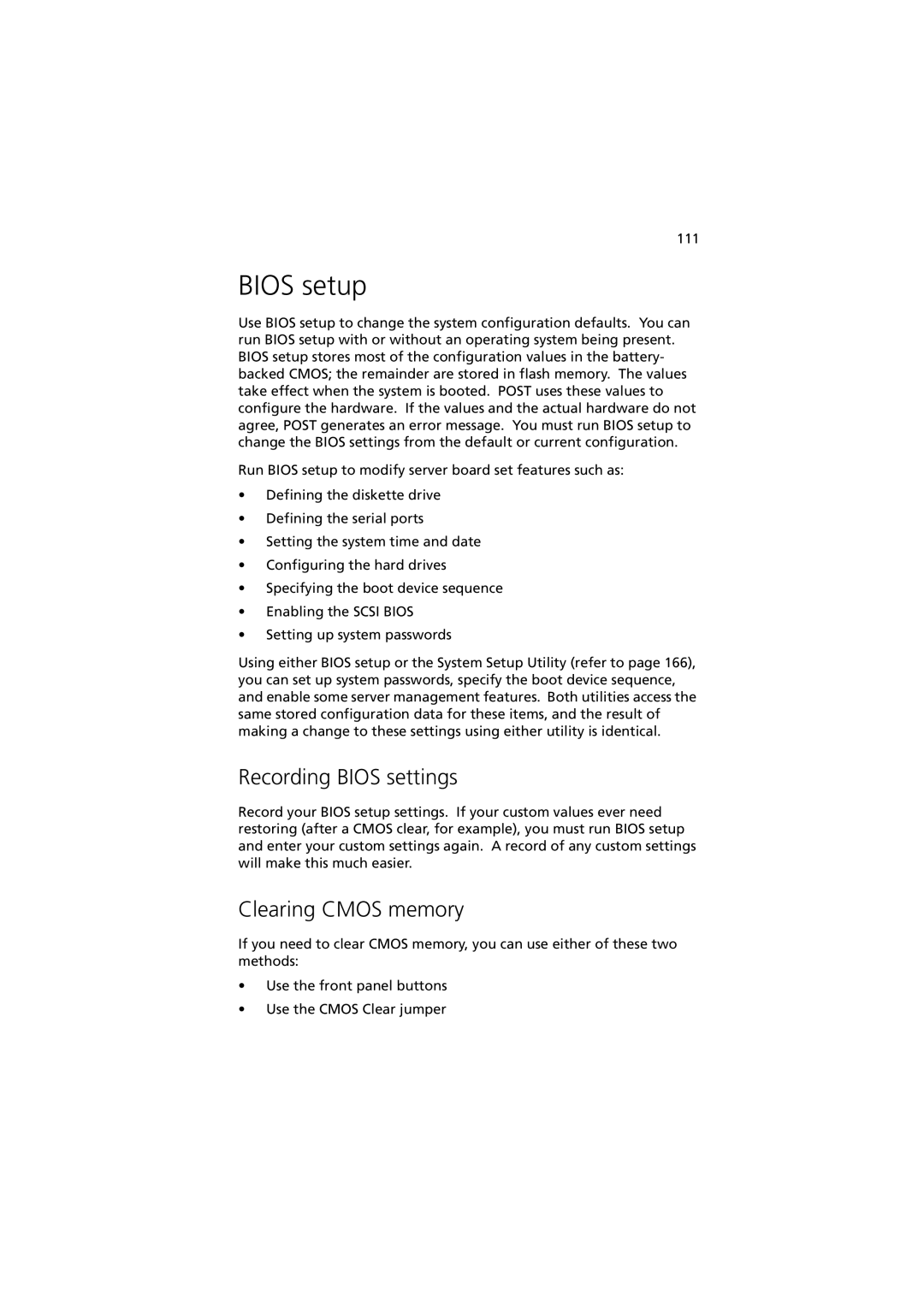111
BIOS setup
Use BIOS setup to change the system configuration defaults. You can run BIOS setup with or without an operating system being present. BIOS setup stores most of the configuration values in the battery- backed CMOS; the remainder are stored in flash memory. The values take effect when the system is booted. POST uses these values to configure the hardware. If the values and the actual hardware do not agree, POST generates an error message. You must run BIOS setup to change the BIOS settings from the default or current configuration.
Run BIOS setup to modify server board set features such as:
•Defining the diskette drive
•Defining the serial ports
•Setting the system time and date
•Configuring the hard drives
•Specifying the boot device sequence
•Enabling the SCSI BIOS
•Setting up system passwords
Using either BIOS setup or the System Setup Utility (refer to page 166), you can set up system passwords, specify the boot device sequence, and enable some server management features. Both utilities access the same stored configuration data for these items, and the result of making a change to these settings using either utility is identical.
Recording BIOS settings
Record your BIOS setup settings. If your custom values ever need restoring (after a CMOS clear, for example), you must run BIOS setup and enter your custom settings again. A record of any custom settings will make this much easier.
Clearing CMOS memory
If you need to clear CMOS memory, you can use either of these two methods:
•Use the front panel buttons
•Use the CMOS Clear jumper
